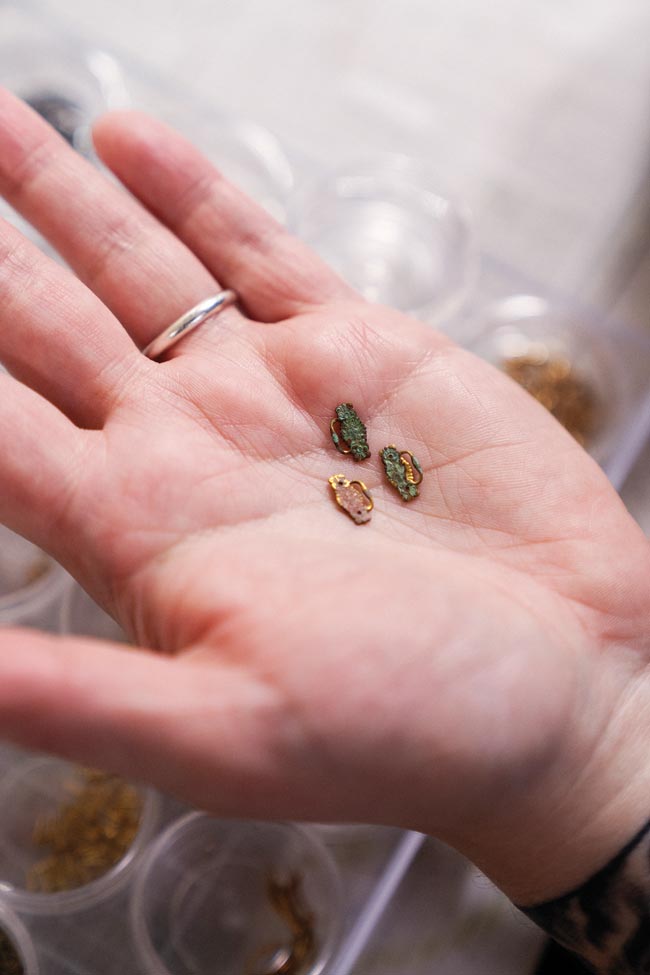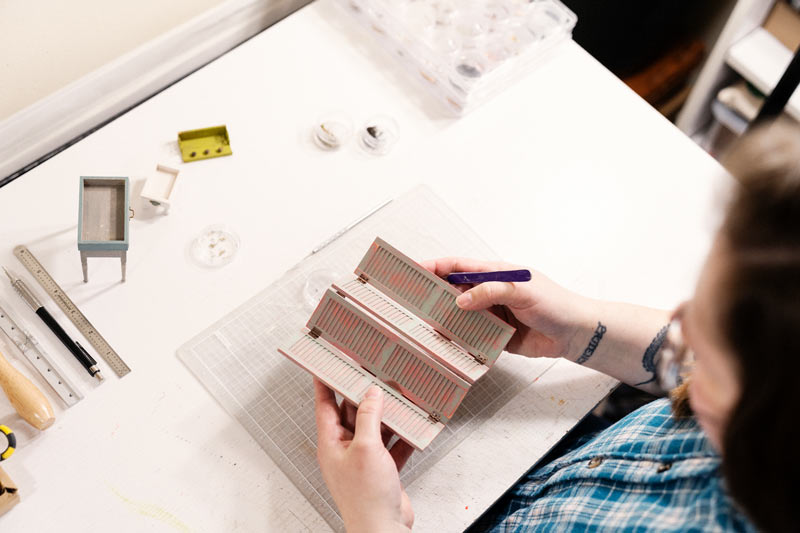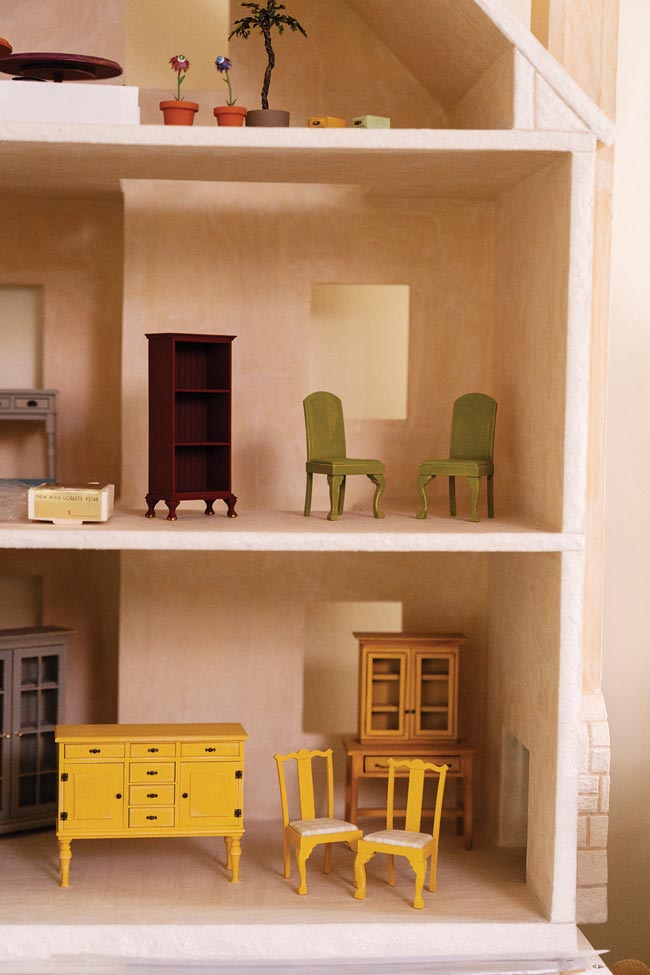By Sara Anne Donnelly
Photos by Tara Rice
From our January 2023 issue
Despite her fondness for assembling tiny bookcases, wee cabinets, bitty chairs, and teensy tombstones, Meghan Smith is not interested in dolls. The 39-year-old has been making miniature houses and housewares for three decades, and although some of her first works were rooms made out of tissue boxes for her Barbies, her motives for making intricate, collectable furniture and décor are different now. “I’m in it for the aesthetic,” she says. “I want people to look at the sanding marks on my furniture and imagine where a person’s hands would have rubbed on it. I like things that have a frozen-moment-in-time look, as if somebody just left a room.”
Working by day in IT support, Smith was mostly selling her miniatures at craft fairs before she decided to start her Etsy shop, Dollhouse Smithery, in 2020. Her customers are mostly miniaturists — collectors of miniature furnishings for their own miniature houses, with or without dolls. “Miniatures give you the ability to create these fantastical scenes that you can’t do in your own home or your own life,” Smith says.




Tools in her home studio include a teeny-tiny awl, handsaw, tweezers, and exactly zero magnifying glasses (“I have really good up-close vision,” she says). Smith uses paper, basswood, 3D-printed parts, tacky glue, and cannibalized components from vintage miniature kits — that is, kits that include instructions and parts to make pre-designed furniture — to create original, palm-size pieces that she carefully scuffs, dirties, and mars to look like antiques. Almost every piece, from her three-inch tables to her six-inch baker’s racks to her inch-long planters, is built to be one-twelfth of its real-life size.
Every door and drawer Smith makes opens and closes, since she still remembers how frustrating it was as a child to have doors and drawers fused shut on plastic dollhouse furnishings. “So disappointing,” she says. “Part of the fun of minis is the sense of wonder of picking something up and being like, what’s inside?”
Tell Us More
Meghan Smith

You started with dollhouses. What inspired the shift to miniature furniture?
I got away from the craft in high school because there’s this stigma of, if you like miniatures, you must like dolls, and therefore you’re a weirdo. But when I went to college, I was like, I don’t care if people know I like miniatures. So I poured my soul into making this one really ugly dollhouse. Each dollhouse I made after that got better and better. When the pandemic hit, I switched to making furniture and décor, because people generally only buy one or two dollhouses, but they spend their lives collecting stuff to go in them.
How do you come up with original designs?
I sit down with bins of scrap wood, spindles, balustrades, and 3D-printed furniture feet, and I start to play. A flat piece with cove edging may become the top of a table. Three pieces of wood may become a shelving unit. I may put the shelves on the tabletop to make a pseudo-hutch. I may decide the hutch would look better with doors, so I might pilfer door fronts from a vintage kit. I play within the constraints of whatever materials I have available.
Why make your furniture look like antiques?
After I buff and paint, I’ll focus on sanding the top of a cabinet door, where an imaginary little person would grab it over and over. I might add burnt-sienna paint, which I water down to get a brown acrylic wash, on the places that would collect grime — in crevices or along detailing on drawers. Furniture has a great way of telling a story about how people have utilized it.





